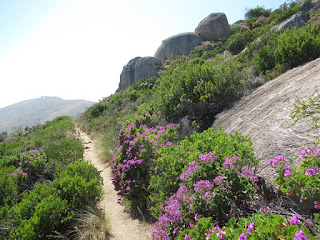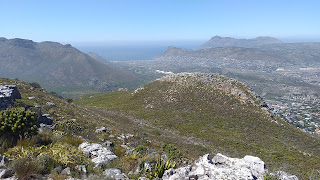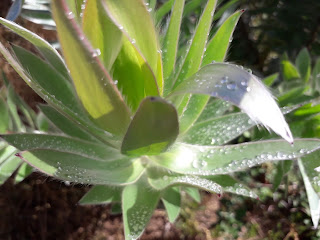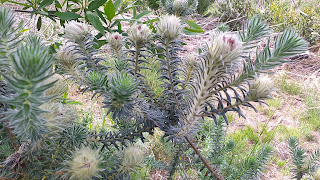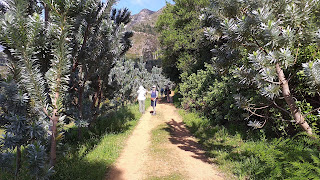We set off from Beaufort West early on Monday, taking the dirt roads northwesterly along the base of the Nuweveldberge, where millions of years of weathering and erosion reveal the origins of our beautiful country and its early inhabitants - dinosaurs! A separate trip is needed to visit the sites and learn about the fossils of the Karoo, and hopefully one day I will get there. The rock composition and formations are awe-inspiring for those who find it so, and the silence is the quietest you have ever heard.
As this is a birding trip, we are not travelling fast, with many stops to reverse, and the dirt roads are not good enough for much speed anyway, and so we are able to enjoy every little item of interest along the way - the train waiting near Aggenys on the Sishen-Saldanha line with 8 locomotives and 312 trucks stretching away into the distance; the transformation of the mountains into massive mine dumps where they are digging out various ores; the little towns along the way (Williston is noteworthy for its remarkable restaurant called Manna which is worth a visit if passing through; Pofadder which has always been on my list to see before I die); and the endless vistas of changing scenery that makes the mind boggle at the intrepid explorers who travelled through this dry, dry and unforgiving land.
The Augrabies Falls National Park is truly a desert of stone - you think it cannot get more rocky until you turn another bend and even more mountains of rock appear. A very special place which should be on everyone's bucket list.
Tomorrow we head north for the desert of sand and hot days and nights. No idea of contact with the outside world. Till then...
